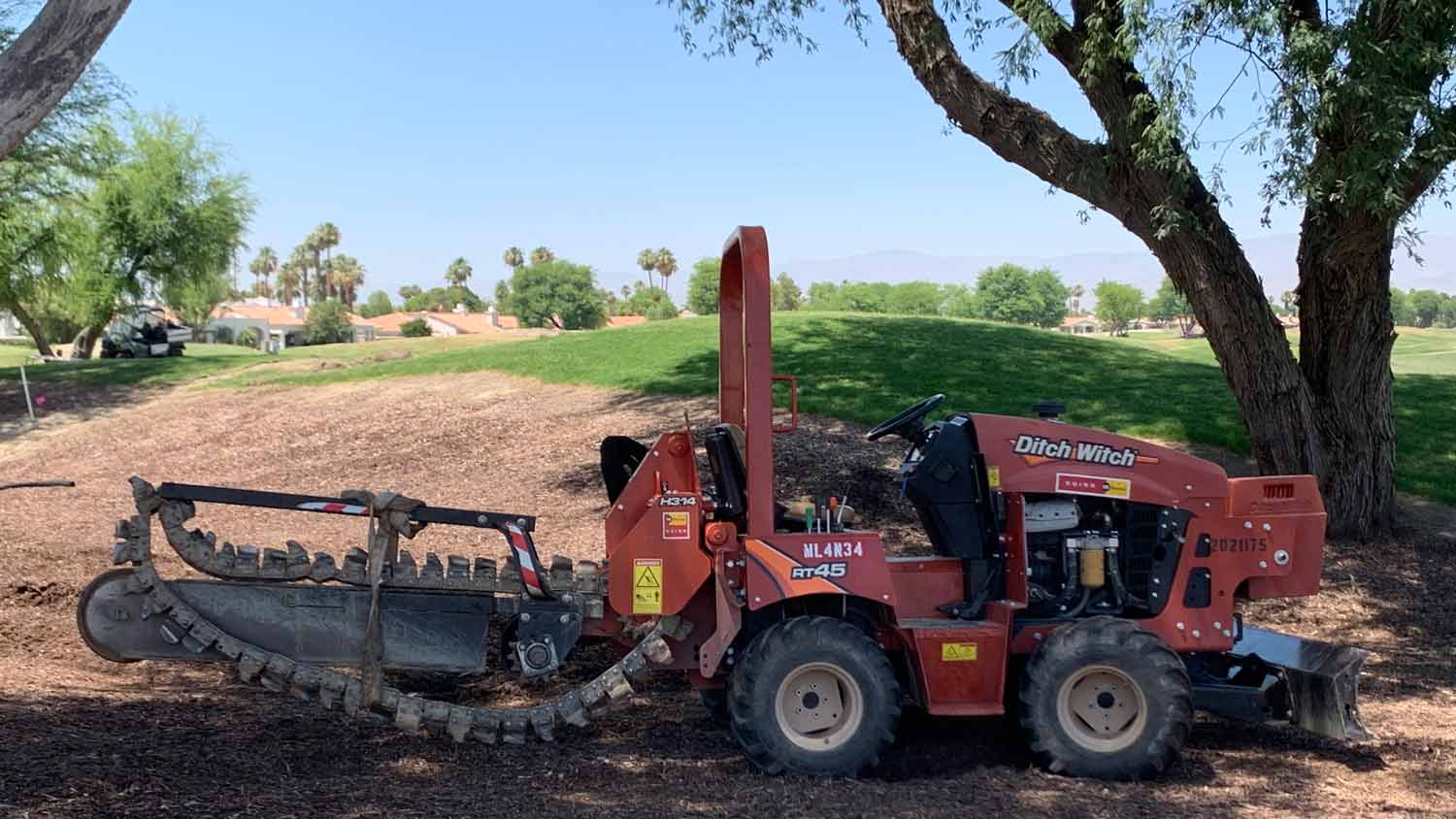
Time to get rid of that old chipped and crumbling walkway? Concrete removal costs can add up, but you have options to simplify the process. Learn more here.
Get to the root of your most pressing trencher questions


Most trenchers can slice through soft, small roots, but trenchers work best for soil.
Trenchers with specialized built-in blades can cut through denser tree roots.
You’ll need to invest in tree and stump removal for thorough root removal.
Trenching costs $400 to $1,200 for 100 linear feet, or $5 to $12 per linear foot.
Renting a trencher costs $125 to $315 per day.
You’re preparing to dig trenches around the yard for your next home improvement project, only to find there are several plant and tree roots to work around. Do you really need to maneuver around all these plants, or will a trencher cut through roots? As it turns out, it all depends on the type of trencher and the size and density of those roots.
A trencher can cut through small, soft roots, but it can’t handle larger roots quite as well. If you’re moving the trencher along your yard and need to work around little plants, a trencher can handle some of these roots without interrupting the trenching process. Larger, denser roots require special tools to remove the root before you can continue trenching.
If you’re digging a trench around a tree but don’t want to harm the tree, give at least 5 feet of clearance between the tree trunk and the trench. You can also use the Rule of Five to determine a safe distance from the tree to the trench: Multiply the diameter of the tree by five and leave that many feet of space between your trench and the tree. For example, if you have a tree with a 3-foot diameter, make sure your trench is at least 15 feet away from the tree.

Keep in mind that not all trenchers are designed for cutting through larger roots, but some portable and walk-behind models have special, built-in blades that can slice through roots. Be sure to check the product rental specifications or ask the equipment rental company for a model that has the blade.
Although they come at a higher price, ride-on trenchers are more heavy-duty equipment that can trench through tougher soils and root systems. You could also hire a local excavation company for quick, complete root removal and trenching without having to handle any heavy machinery yourself.
Now that you’re aware of how to use a trencher around roots, it’s time to study up on other best practices for using a trencher. From the depth of the trench to how you use it, here are some guidelines for using a trencher.
When considering how long to dig a trench, the project itself will determine the length. For example, if you’re installing a sprinkler system, the trench should span however long you want the sprinklers to run. Similarly, if someone is burying utility lines, the trench will need to span the length of the lines.
The depth of your trench can vary based on how deep the trencher will dig and what type of project you’re completing. Smaller, walk-behind trenchers can dig between 1 foot and 4 feet deep, which works for most utility lines, like electric or gas. Larger, ride-on trenchers can dig up to 6 feet deep, which can be handy for water lines.
Ultimately, you should consult an excavation pro to determine the right depth for your trench. Leave any alterations of utility lines to a professional, and if you think you need a deep trench, don’t try to DIY the job.
Renting a trench or paying for professional trenching can be expensive, so it’s natural to ask if you can use one trench for multiple projects. For instance, you may wonder if gas and electric lines can be in the same trench. However, many building codes require separate trenches for safety reasons, especially for utility lines, so be sure to have a pro determine the best course of action.
You may also want to consider whether trenching versus boring is right for your project. Trenching may be less expensive up front for projects like installing drainage or a sprinkler system, but boring is a more precise option with less cleanup for installing utility lines.
The cost to dig a trench is $400 to $1,200 for 100 linear feet, or $5 to $12 per linear foot. For small projects, renting a micro-trencher will cost $125 per day, and bigger trenchers and ride-on models cost around $315 per day. You’ll also need to consider costs for utility lines, a drainage system, a sprinkler system, and other materials, depending on what project you’re looking to accomplish with the trenching.
From average costs to expert advice, get all the answers you need to get your job done.

Time to get rid of that old chipped and crumbling walkway? Concrete removal costs can add up, but you have options to simplify the process. Learn more here.

If you’re building a new home, you might need to consider the cost of digging out a basement. Use this pricing guide to get an estimate for the project.

The cost to re-level your mobile home depends on your home’s location, size, and whether it needs extra support. Read more about the cost of leveling your mobile home.

When digging for utility installation, you may wonder if gas and electric can be in the same trench. Find out the basics to utility trenches in this guide.

Planning a yard project? Know when to call 811 to keep you safe while avoiding expensive damage to underground utilities.

Trenches and ditches both involve excavation, but they serve different purposes. Unsure which one you need? Let’s compare a trench versus a ditch.